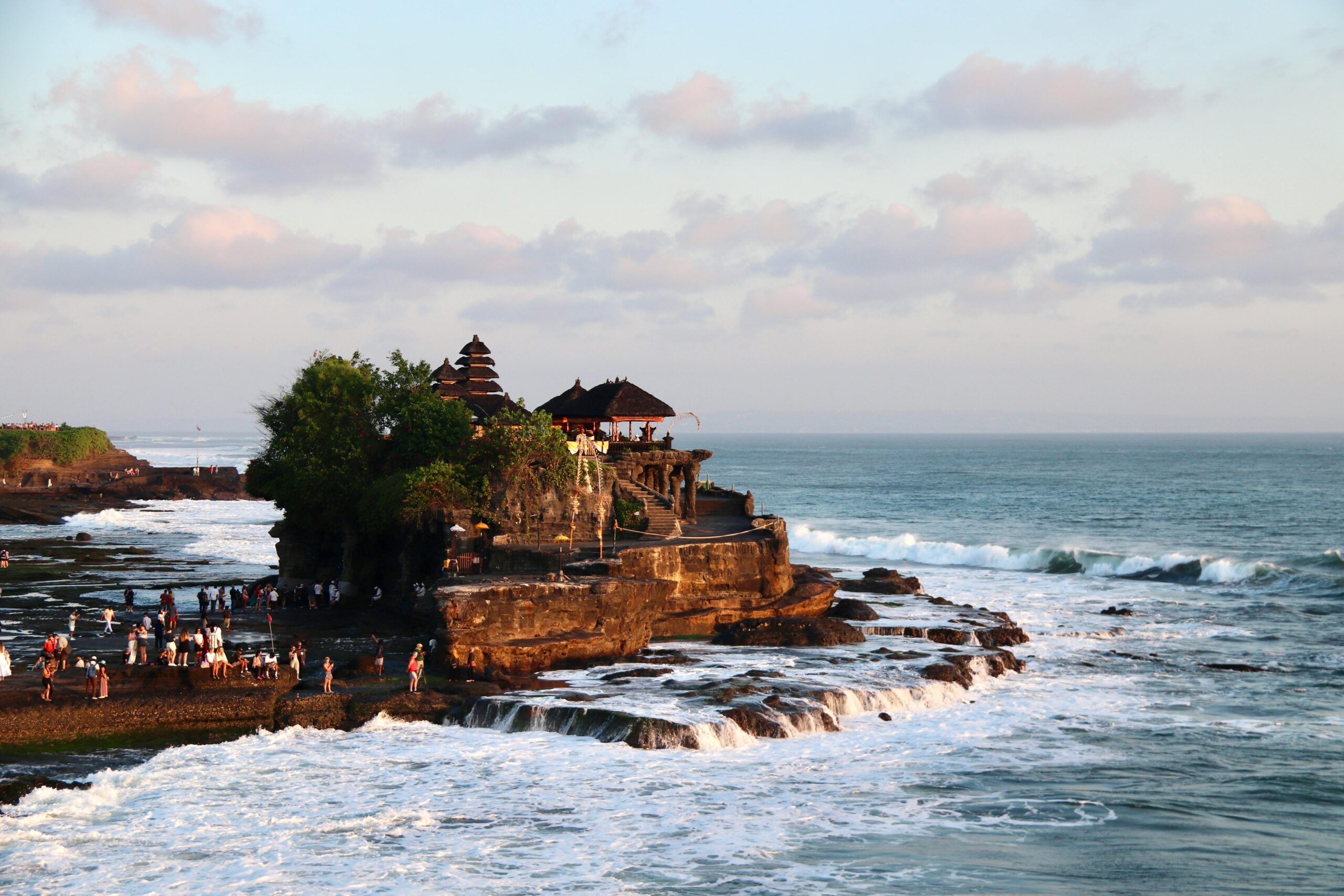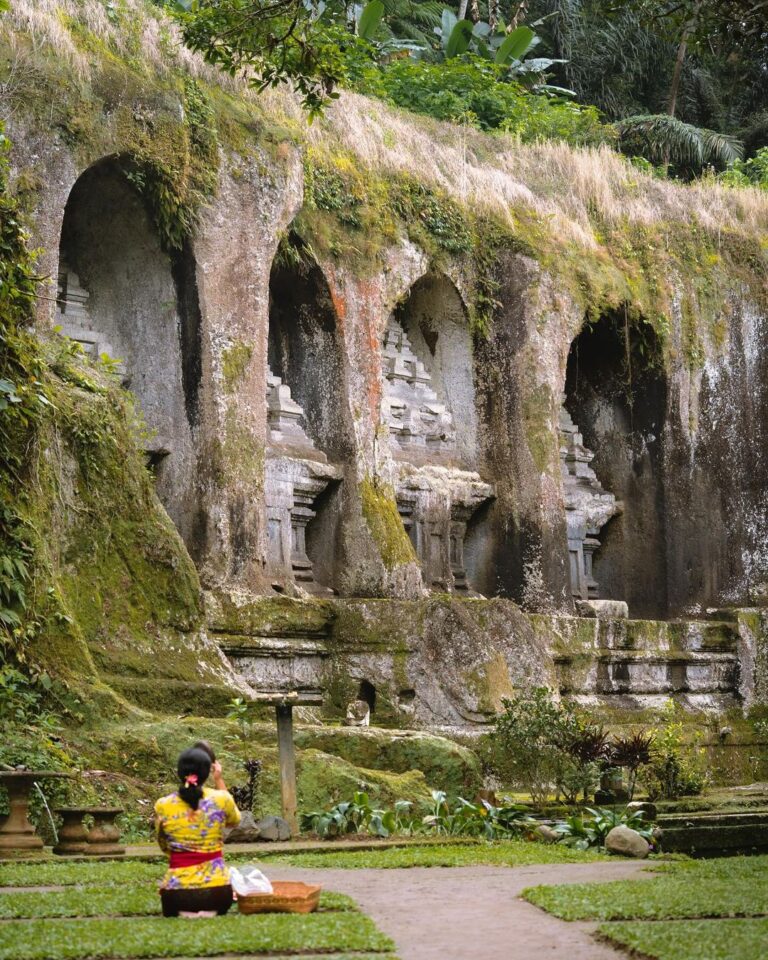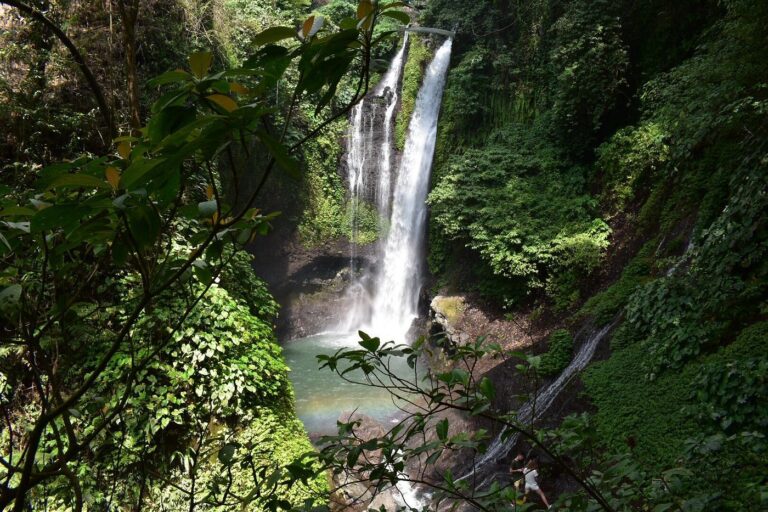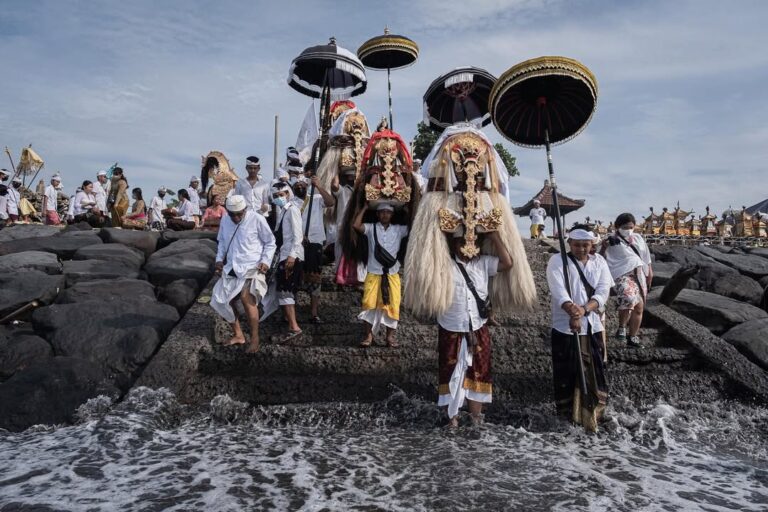Picture this : a dramatic rocky outcrop kissed by crashing waves. Now imagine a captivating Hindu temple perched atop it, silhouetted against a fiery sunset – that’s Tanah Lot, one of Bali’s iconic landmarks.
Known as “Land in the Sea”, this enchanting place isn’t just a photographer’s dream but a revered pilgrimage site for devout Balinese.
Prepare to be swept away by its beauty, fascinating legends, and timeless cultural significance. Tanah Lot was built to worship ‘Bhatara Segara’, or the God of the Sea.
Its origin story is as captivating as the view. One popular tale speaks of Dang Hyang Nirartha, a revered 16th-century Hindu priest.
In the history of Tanah Lot, it is said that Dang Hyang Nirartha saw a holy light from the sea of Bali, so Dang Hyang Nirartha looked for the location of the light and he arrived at a beach in a village called Beraban in Tabanan.
At that time, Beraban village was led by Bendesa Beraban Sakti, who strongly opposed Dang Hyang Nirartha’s teachings in spreading Hinduism. Bendesa Beraban Sakti, adheres to the flow of monotheism.

Dang Hyang Nirartha meditated on a rock that resembled the shape of a parrot that was originally on land. In various ways, Bendesa Beraban wanted to expel Dang Hyang Nirartha from his nesting place.
Based on the legend of Dang Hyang Nirartha, he moved the rock where he meditated to the middle of the beach with spiritual power. The rock is named Tanah Lot, which means “rock in the middle of the ocean”.
After that incident, Bendesa Beraban Sakti recognized Dang Hyang Nirartha’s supernatural powers by becoming his follower and embracing Hinduism along with all the local residents.
It is said that before leaving Beraban village, Dang Hyang Nirartha gave a ‘Keris’ (sacred dagger) to the village head of Beraban which has the power to eliminate all pests and diseases that attack crops and plants.
The Keris is now kept at Puri Kediri, and a religious ceremony is held at Tanah Lot Temple every six months.
Since this is routinely done by the residents of Beraban village, the welfare of the residents has greatly increased with abundant agricultural harvests and they live with mutual respect.

Another tale speaks of a sea serpent guardian that Nirartha created in a form of a poisonous snake thanks to the power of his shawl.
This sea snake is believed to live at the bottom of Tanah Lot, to protect the temple from evil intruders and harm. These myths fuel Tanah Lot’s enduring magic – a place guarded by spirits and steeped in spiritual significance.
Tanah Lot is a collection of shrines dedicated to different deities, the main attraction is Pura Luhur, perched dramatically on the rock. During low tide, a narrow causeway emerges, allowing access to this holy site.
Here, offerings are made to the spirits of the sea and ancestors, reflecting the Balinese reverence for nature and the delicate balance-
-between the physical and spiritual realms. As you explore, intricate carved gates (candi bentar) and guardian statues will greet you, standing watch over the sacred grounds.
Don’t miss Pura Bale Kambang, a pavilion-like structure dedicated to the sea spirits, and Pura Batu Bolong, a smaller shrine on a separate rock nearby.

Tanah Lot has been disturbed by abrasion and erosion due to waves and wind. The area around Tanah Lot is also landscaped considering Tanah Lot’s role as a tourist destination in Bali.
For this reason, the Bali provincial government, through the Bali Coastal Area Security Project, carried out several renovation projects to strengthened the cliffs around the temple.
The first renovation was carried out in 1987 as a phase I protection project. At this stage, a two ton wave breaker (tetrapod) was placed in front of Tanah Lot Temple.
Apart from that, concrete banks and artificial walls were also built to protect against waves. Tanah Lot’s true magic unfolds as day surrenders to dusk.
The fiery embrace of the setting sun paints the sky in vibrant hues of orange, pink, and purple, creating a breathtaking backdrop for the temple silhouetted against the horizon.
Witnessing this awe-inspiring spectacle is a must for any Bali itinerary. The best time to visit Tanah Lot is on Odalan ceremony, which is celebrated every 210 days.

This ritual usually takes place on the Buddhist holy day Cemeng Langkir near the Galungan and Kuningan celebrations.
On this day, you will see rows of Balinese women gracefully carrying offerings on their heads to pray at the Tanah Lot temple.
Beyond the Temple Gates
The area around Tanah Lot offers a delightful mix of experiences and is very well managed for tourist purposes, complete with vehicle parking facilities, toilets, art shops, restaurants, hotels, open stages, tourist information services, as well as security and health services.
Local vendors line the pathways, tempting you with traditional Balinese handicrafts, souvenirs, and essential sarongs (required for entering the temple grounds).
Watch daring local fishermen cast their nets from the cliffs, a testament to Bali’s deep connection to the sea.
Indulge in fresh seafood at a beachfront restaurant, the sound of waves crashing against the shore your soundtrack.
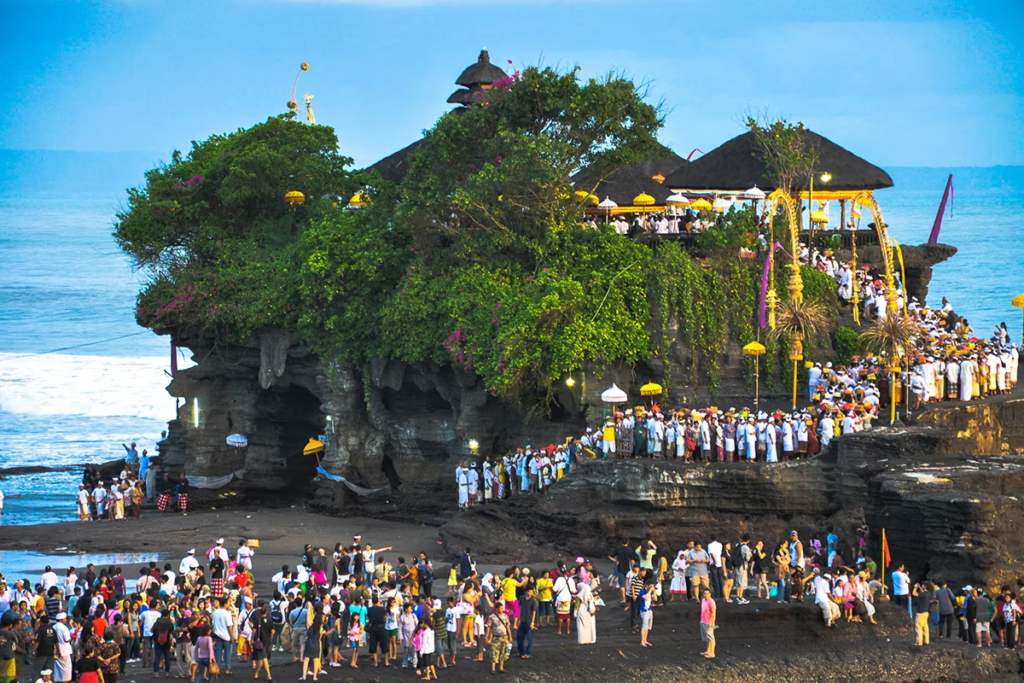
Cultural performances are sometimes held nearby, offering a glimpse into the vibrant tapestry of Balinese dance and music.
Pekendungan Temple, Batu Bolong Temple, Batu Mejan Temple, Jero Kandang Temple, and Enjung Galuh Temple, are some of the temples that you can visit while around Tanah Lot.
Pura Batu Bolong or Perforated Rock is an extraordinary sea temple built on a jutting rock cliff. This temple is considered the twin of Tanah Lot, because there are many similar temple reliefs.
Located in Canggu, this temple is believed to be the birthplace of ‘mata air suci’ (holy spring). Many important Balinese rituals and ceremonies are held at this stunning location.
Another temple with a holy spring is called ‘Batu Mejan Temple’ where the holy spring, namely Tirta Penglukatan, is believed to be able to eliminate all negative things and bring happiness.
Jero Kandang Temple in Tabanan is usually visited by Balinese Hindus to seek health and protection for livestock and agricultural crops.
Meanwhile, Enjung Galuh Temple is a famous temple for worshipping Dewi Sri, where Hindus pray for prosperity and prosperity.
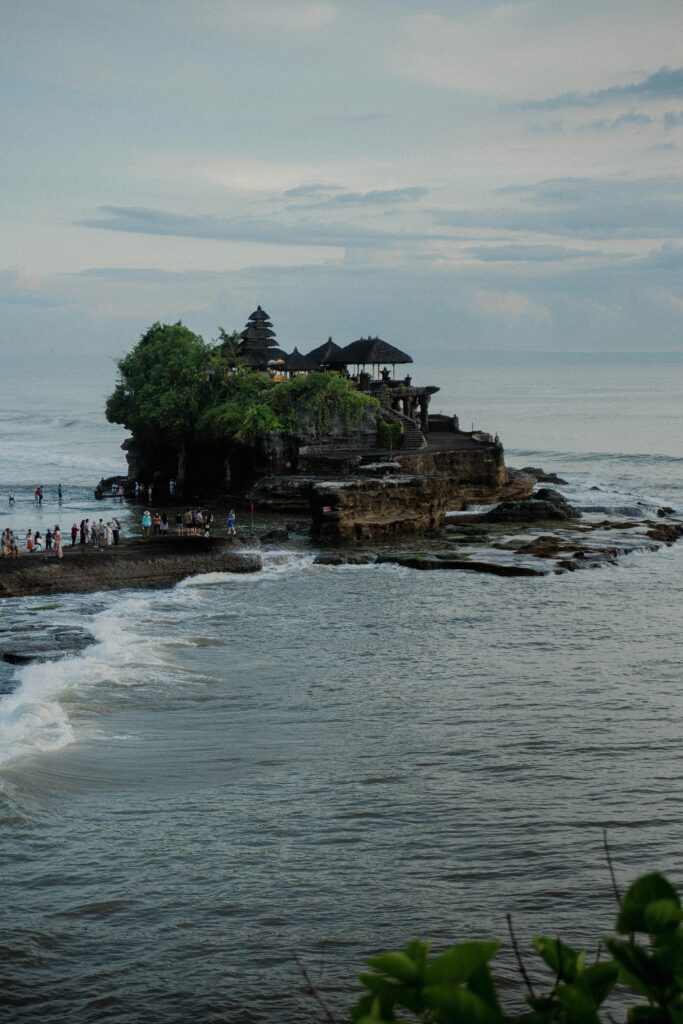
(Photo by : Iurii Laimin)
A Legacy of Faith
Tanah Lot is more than just a postcard-perfect sight; it’s a window into Bali’s soul. Standing amidst the crashing waves and witnessing the unwavering devotion of Balinese pilgrims is a humbling experience.
The temple serves as a powerful reminder of the island’s deep connection to the natural world and its rich spiritual heritage.
This magnificent temple offers a unique blend of cultural immersion, breathtaking scenery, and spiritual significance. Come experience the beauty of this iconic landmark, the power of the ocean, and the enduring legacy of Bali’s rich heritage.

